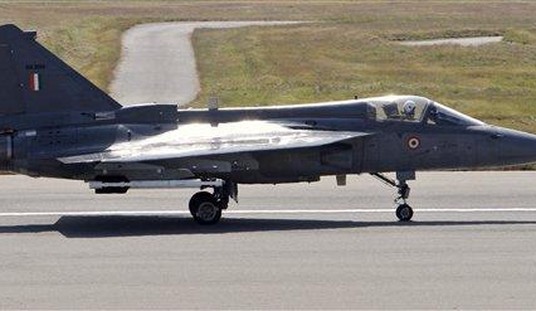As the world’s attention is focused on ISIS, it’s easy for many to neglect the threat posed by their brethren in less-covered parts of the globe.
It’s also easy for many to dismiss the growth of al-Qaeda affiliates in North Africa as a regional threat, even as Americans in Uganda were warned by the U.S. Embassy to shelter in place over the weekend because of an imminent threat from Al-Shabaab. “We remain vigilant to the possibility that some of the attack cell could still be at large, but we believe that it is appropriate to rescind the guidance to shelter-in-place,” the Embassy said Sunday. “We urge, however, that all U.S. citizens maintain heightened security awareness and continue to monitor email and news outlets for any updates.”
It could also be easy for some to assume that Al-Shabaab is significantly degraded after a U.S. airstrike on Labor Day killed its leader Godane, instead of noting how quickly they moved new leadership into place and renewed their fidelity to al-Qaeda.
That’s why the HBO documentary Terror at the Mall, which premiered on the cable network Monday night, is so important.
The Westgate mall in Nairobi, with its patrons a truly globalized mix of races, creeds, nationalities, and ages, was a microcosm of the greater al-Qaeda target. On Sept. 21, 2013, Al-Shabaab moved in on their target. Sixty-seven people were killed and nearly 200 wounded.
British documentary producer and director Dan Reed has experience showing the brutality of terrorism: 2009’s Terror in Mumbai and 2003’s Terror in Moscow.
In Terror at the Mall, he painstakingly pieced together footage from more than 100 security cameras around Westgate as well as the still photos of renowned Reuters war photographer Goran Tomašević, who gives the story behind some of his famous photos from that day. We also see him, in full combat photography gear, drift through security camera footage with plainclothes police as the bullets fly.
Reed sits down with some of the survivors seen in the footage, including Niall Saville, who was eating lunch at a patio restaurant when the attack began. His wife, Moon Hee, is badly wounded and he drags her into the restaurant and behind the counter as a security camera looks on. A terrorist eventually discovers the pair and shoots Saville. The couple lay on the ground in a pool of blood, the husband trying to stay conscious as his wife dies.
In the large adjoining supermarket, Nakumatt, we see a heroic man get ripped by bullets for venturing out into the aisles to get a bottle of water for a wounded man. We hear from his savior, who admits he learned how to put life-saving pressure on the wounds from watching movies. We hear the stories of the mothers with children who went grocery shopping that day only to cower behind the meat counter in a last-ditch effort to stay alive. An Al-Shabaab terrorist comes by and sprays customers with bullets as they try to shield their children.
Katherine Walton, who hid her three children under a mall kiosk table, speaks of her immediate realization that as an American, as a Christian, she would be a prime target for the terrorists. Another survivor from the supermarket recounts that one of the Al-Shabaab members asked a Kenyan mother if she was Muslim or Christian; she replied she was Christian and was immediately shot to death.
Some of the terror was out of the reach of security cameras, like the massacre at a children’s cooking competition on the roof of the parking garage. A few of the hostages were released after telling the terrorists that they were Muslim, but Muslims were also among the dead. Radio host Ruhila Adatia-Sood was one of three pregnant women killed that day.
The film also highlights the people who came to help, including businessman Abdul Haji, who grabbed his gun and joined plainclothes policemen trying to rescue survivors in the mall (he admits he didn’t have many rounds that day, but stresses it’s accuracy that matters most). The disorganized response of Kenyan authorities, including soldiers accidentally shooting at survivors and killing Kenyan policemen, underscores the tragedy.
It concludes with Al-Shabaab’s “message to unbelievers”: “God willing, there will be more Westgates. We have hundreds more volunteers.”
Terror at theMall is stark, unflinching, bloody and terrifying. It also couldn’t be a more chilling reminder at a more important time. It’s not about pundit commentary and lets the footage speak for itself. It will stay with you for a long time. And in a terror fight that has seen its share of fair-weather commitment, that is needed.
“We don’t know each other, we all come from different communities,” recalled survivor Valentine Kadzo, who hid under the kiosk with Walton. “But at that time we were one.”
And that’s exactly the approach we need to take in confronting the growth of Boko Haram, al-Qaeda in the Islamic Maghreb, and Al-Shabaab.









Join the conversation as a VIP Member